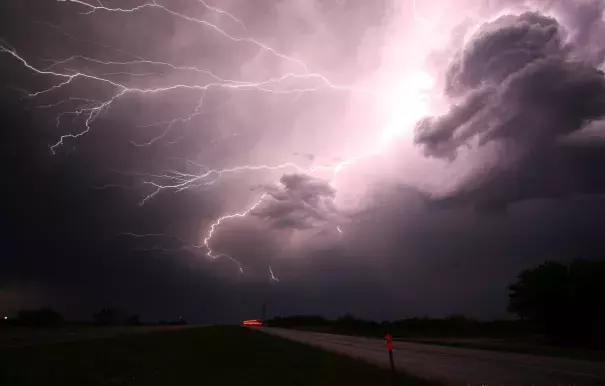A warming Arctic produces weather extremes in our latitudes

Atmospheric researchers at the Alfred Wegener Institute, Helmholtz Centre for Polar and Marine Research (AWI) have developed a climate model that can accurately depict the frequently observed winding course of the jet stream, a major air current over the Northern Hemisphere. The breakthrough came when the scientists combined their global climate model with a new machine learning algorithm on ozone chemistry. Using the combined model, they demonstrate that the jet stream's wavelike course in winter and subsequent extreme weather conditions like cold air outbreaks in Central Europe and North America are the direct result of climate change. Their findings were published in Scientific Reports on 28 May 2019.
...
According to the team's findings, sea-ice retreat and the accompanying increased activity of atmospheric waves are creating a significant, ozone-amplified warming of the polar stratosphere. Since the low polar temperatures form the jet stream's motor, the rising temperatures in the stratosphere are causing it to falter. In turn, this weakening of the jet stream is now spreading downward from the stratosphere, producing weather extremes.
The weakened jet stream is due to climate change
In addition, with the new model the researchers can also more closely analyze the causes of the meandering jet stream. "Our study shows that the changes in the jet stream are at least partly due to the loss of Arctic sea ice. If the ice cover continues to dwindle, we believe that both the frequency and intensity of the extreme weather events previously observed in the middle latitudes will increase," says Prof Markus Rex, Head of Atmospheric Research at the AWI. "In addition, our findings confirm that the more frequently occurring cold phases in winter in the U.S., Europe and Asia are by no means a contradiction to global warming; rather, they are a part of anthropogenic climate change."
The team's efforts also represent a significant technological advance: "After the successful use of machine learning in this study, we are now for the first time employing artificial intelligence in climate modeling, helping us arrive at more realistic climate model systems. This holds tremendous potential for future climate models, which we believe will deliver more reliable climate projections and therefore a more robust basis for political decision-making," says Markus Rex.


